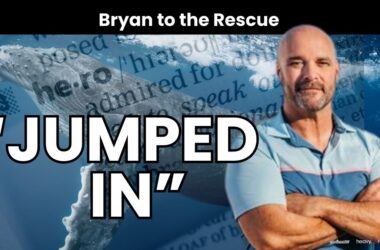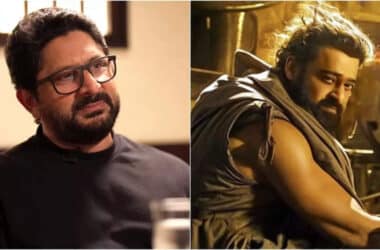What began as a flippantly offered pipe dream, on second thought sounded too good to resist.
Kent Nagano was leading the period-instrument ensemble Concerto Köln in concert performances of Mozart’s “Idomeneo” in 2016 when one musician suggested he come back for more, and with new repertoire. Because Nagano was conducting the “Ring” at the time, he lightheartedly said, “How about Wagner?”
They laughed at the idea of taking on Wagner’s four-opera, 15-hour epic, Nagano recalled in a recent interview. Not just playing it, but devoting years of research and practice to a historically informed performance of it. Then they realized that this was rich terrain; installments of the “Ring” had been given this treatment before, but they didn’t know of any complete cycle. Now, after years of study and partnerships across universities, orchestras and cities in Germany, Nagano and his collaborators are in the middle of presenting their findings.
And just in time: In 2026, it will be 150 years since Wagner premiered the full “Ring” at his festival in Bayreuth, Germany. Each year until then, Nagano and the Concerto Köln — with the addition of Dresdner Festspielorchester for “Die Walküre” — are touring installments of their historically informed “Ring” operas: last year, “Das Rheingold,” and now “Die Walküre.”
Heard in the acoustically generous Concertgebouw in Amsterdam on March 16 as part of the NTR ZaterdagMatinee series, “Die Walküre” took on such clarity that no supertitles were necessary to understand the singers. And, yes, the score sounded different from a typical modern performance.
This is Wagner without constant vibrato, and sometimes without traditionally operatic singing. But mostly, the difference in sound comes from the instruments themselves, both originals from the 19th century and reproductions. Historical, often temperamental winds and brasses have a milder timbre, similar to the gut strings used throughout the orchestra, which here is tuned to 435 hertz — Wagner’s preference, slightly lower than the frequency of 440 Hz used by most players today.
The result may sound shockingly quiet to listeners who have come to equate Wagner with immensity. Culture — cinema, Broadway, pop concerts — is often so loud, it distorts our expectations for acoustic music, which is also louder than it was in the past. Conductors, helped by powerful modern instruments, often inflate Wagner, forcing singers to nearly bark to be heard. Audiences, in turn, get to hear a “Ride of the Valkyries” that matches “Apocalypse Now.”
That’s not necessarily a bad thing; interpretation is the essential ingredient of a living art form like opera. And you can look at historically informed performance as just another mode of interpretation.
Nagano didn’t arrive at his approach alone. His “Ring” has an organizational arm, called Wagner-Lesarten, or Wagner Readings, which has brought together minds from music, science and history to approximate the composer’s musical world. (Much of the research and its results are or will be available to the public, through discussions, publication and, eventually, recordings.)
In the interview, Nagano said period performance with the “Ring” isn’t easy, because the work doesn’t represent a moment in history so much as a rapidly changing era in music. “It was written during quite a large period of time,” he added, referring to a gestation period of more than two decades. “There were major developments of instrumental technique and vocal stylistic development.”
Fortunately, he added, Wagner was a prolific writer. (Too prolific, some might say.) He left behind his thoughts on conducting, singing, dynamics and instrumental articulation like portamento, sliding from one note to another. “From all this,” Nagano said, “it’s clear that Wagner was very much impressed and influenced by bel canto style from Italy, but also that bel canto style combined with parlando style — highly lyrical moments, but also declamation, and screaming at times.” During Brünnhilde’s entrance in the concert “Die Walküre,” for example, she ended her “Hojotoho!” with a seemingly crass upward whip on the last syllable, like a war cry.
The question for Nagano and his team was how to apply these period touches, and how often. For voices, the goal was clarity. Wagner’s theories about music-drama — a term that puts the two forms on equal footing — called for the orchestra to support singers in ways that, Nagano found, included rubato, or slightly bent tempo, to make room for the natural flow of storytelling. Instrumental ornamentation took on dramaturgical purpose; portamento was emotional, and vibrato was no longer a given.
Training the musicians took about two years for “Das Rheingold” and a year for “Die Walküre,” unheard-of amounts of time for concert opera. But the process required some artistic rewiring. For the singers, consonants that might have been unvoiced in a modern Wagner performance would be voiced here, and drawn out. Rolled R’s, usually an interpretive choice, became standardized.
In a documentary about the project, the cellist Wener Matzke said: “Something I didn’t personally realize, for example, when it says ‘piano dolce,’ that means it’s done with a relatively quick and fluid bow stroke. Today we use as much bow as we have. Whereas in the past, people used as much bow as they needed. And that’s a totally different approach.”
Nagano used the same rehearsal method as Wagner. The text, or what Wagner called the poem, was written before the music, so the singers approached it with a similar trajectory. When they first gathered, they spoke the libretto as if it were pure theater, Nagano said, “with a strong emphasis on punctuation marks, commas and agogic accents” — accents that also prolong a note — “and correct pronunciation of certain dialects.”
Next, the artists would again speak their lines, but with music underneath. Only at the end would they sing their notated parts. The aim is for a strict attention to the text, with performances that follow the dramatic design of Wagner’s words. By the time cast members are singing, they also know the material extremely well. It’s no surprise that at the Concertgebouw, no one relied on a score.
A sense of inhabiting the work extended to the concert, even if the historically informed approach, in drawing attention to itself, sometimes came off as more dissertation defense than drama. (That might also be because it wasn’t staged beyond some gestures.)
The expressive portamento was persuasive, and the sparer ornamentation, combined with skilled playing, gave the score a transparency that’s rare in Wagner performance. Ric Furman’s Siegmund, Sarah Wegener’s Sieglinde and Claude Eichenberger’s Fricka may have been small in size, but they were rich in characterization. Lower voices can be the most difficult to understand, yet Patrick Zielke’s Hundig was intelligible in each syllable; the same could be said for Welton’s Wotan. Only Christiane Libor, as Brünnhilde, was hard to follow, her control unwieldy and her pitch imprecise.
Brisk tempos kept the running time far shorter than a typical “Walküre,” and they were never breezier than in long solos. Wotan’s reflective monologue in Act II, the heart of the “Ring,” was more like a lyrical speech, with the rubato adding emotional emphasis on Brünnhilde’s name as he described how she was born.
The comparative softness in the brasses — their somewhat wan heroism compared with what we’re used to — raises questions about what “Siegfried” will sound like next year. On balance, though, this “Walküre” was an enlightening glimpse into a possible past that could have broader applications for the future of Wagner performances.
It may even have a lasting effect on Nagano, who will return to these operas later with modern orchestras. In the interview, he recalled a recent performance that he had led of Bruckner’s Fifth Symphony, which was composed as Wagner was premiering the “Ring.”
“Historically informed performance practice had quite a strong interpretive effect on that Bruckner symphony,” Nagano said. “Once one has the access to this knowledge, the inspiration and perspectives that are brought on by source materials, it’s an important part of your life as well. So I’m curious what will happen now.”
Source link












